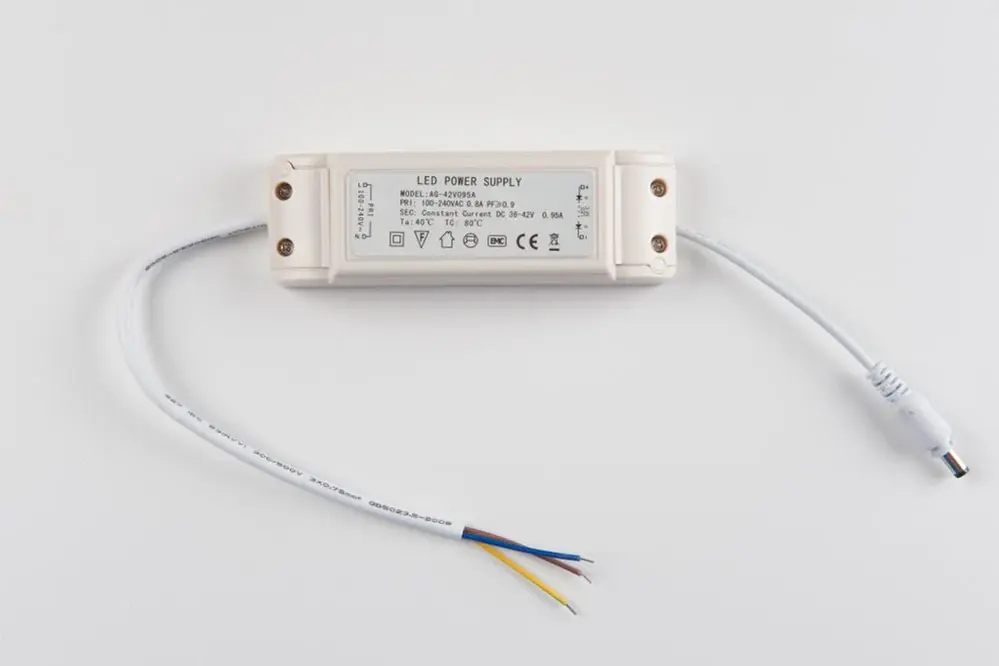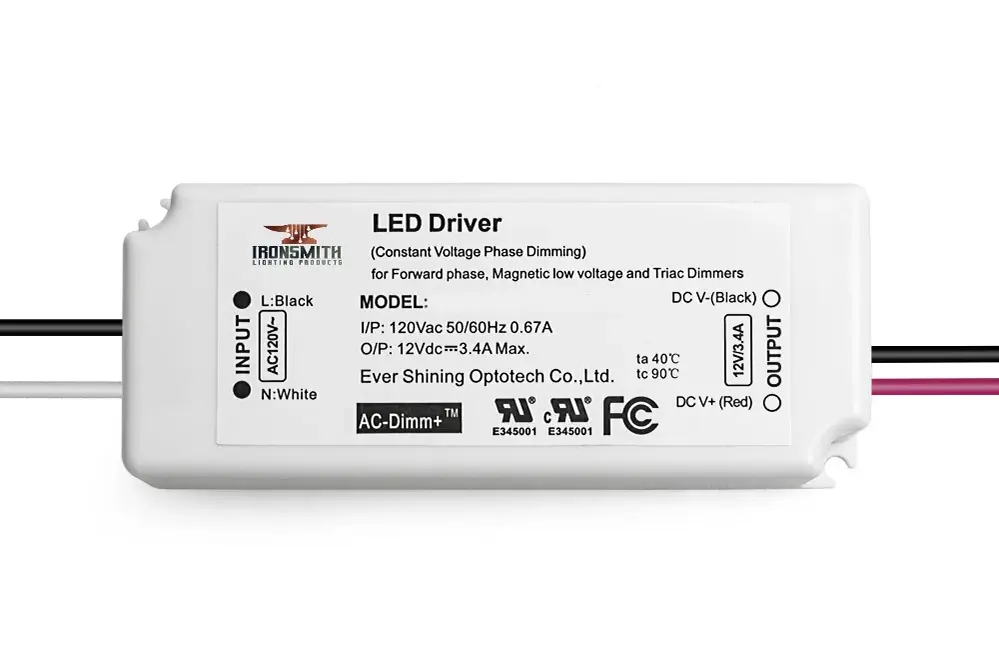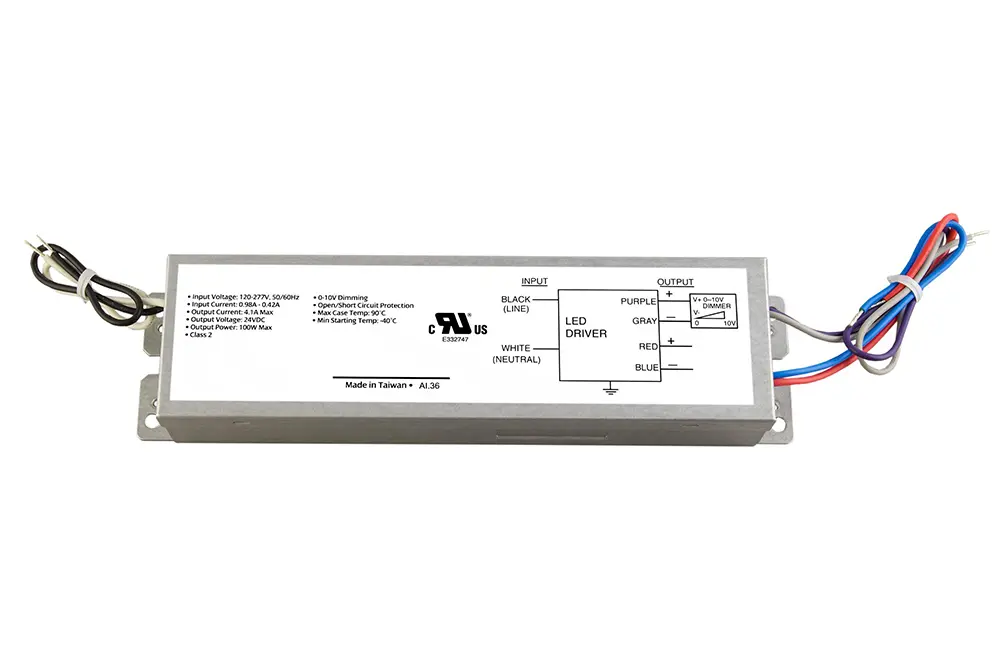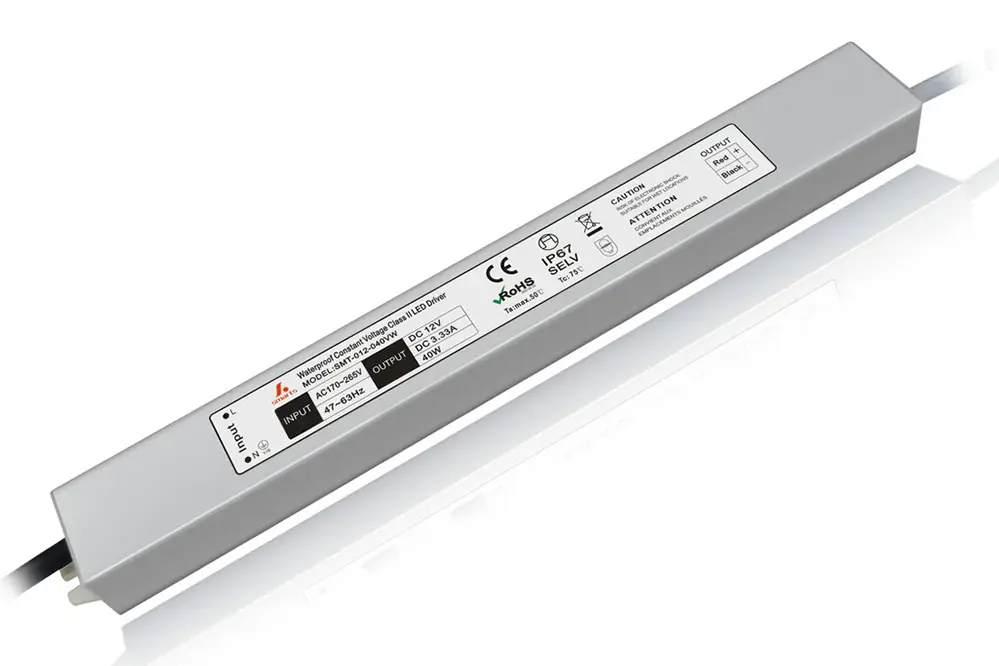Are you aware that understanding LED drivers is the key to unlocking the full potential of LED lighting systems? In a world increasingly driven by energy efficiency and sustainability, LED technology stands at the forefront, yet many overlook the critical role of LED drivers. These components are not just accessories; they are the heartbeat of any LED system, ensuring optimal performance and longevity.
One common challenge faced by many is the misconception that all LED drivers are created equal. This misunderstanding often leads to mismatched components, resulting in reduced efficiency and premature failure of LED lights. It’s essential to recognize that LED drivers vary significantly in terms of voltage, current, and compatibility with different LED types.
The benefits of understanding LED drivers extend beyond mere functionality. A well-chosen LED driver can enhance energy savings, improve light quality, and extend the lifespan of your lighting system. By investing time in understanding these components, you can achieve superior performance and sustainability in your lighting solutions.
In this comprehensive guide, we will explore the various types of LED drivers, their functions, and how to select the right one for your needs. We’ll also address common pitfalls and provide practical tips for maximizing the efficiency of your LED systems. So, if you’re ready to transform your understanding and application of LED technology, read on and empower your lighting solutions with the knowledge you gain.
What are LED Drivers?
LED drivers are pivotal components in the realm of LED lighting, harmonizing the electrical current and voltage to these luminous diodes.
Simply put, an LED driver functions as a sophisticated power regulator that adjusts the incoming power supply, ensuring the LEDs receive the precise amount needed for flawless functionality. This regulation is vital because LEDs operate on low voltage DC current, while typical power sources supply higher voltage AC, necessitating efficient conversion and management. Without a carefully calibrated LED driver, LEDs would be susceptible to damage or decreased lifespan.
Moreover, these drivers serve as a protective buffer, shielding LEDs from power fluctuations. In unstable power conditions, having a reliable LED driver can significantly enhance the durability of an LED lighting system, safeguarding the delicate electronic components from unforeseen spikes and drops.
Ultimately, LED drivers stand as indispensable guardians of energy efficiency and light quality, embodying the seamless marriage between technology and sustainability. By meticulously regulating power and safeguarding against inconsistencies, they ensure that LEDs not only survive but thrive in environments demanding consistent illumination, perpetuating the brilliance and endurance of modern lighting solutions.
Why LED Drivers are Essential
LED drivers are the lifeblood of modern lighting systems, playing an indispensable role in ensuring optimal performance and longevity. Without these, LEDs are vulnerable to erratic behavior and premature failure.
By converting incoming power to the precise level LEDs require, drivers ensure seamless operation. They are vital for achieving the desired lighting output efficiently and consistently.
An LED driver’s capability to manage electrical loads dynamically allows for a spectrum of lighting solutions, from subtle ambiance in residential settings to vibrant displays in commercial spaces, ensuring adaptability in diverse environments.
These critical components are akin to the nerve centers of illumination technology, orchestrating a symphony of light while prioritizing efficiency and protection. Their innovative design ensures compatibility across various applications and empowers LEDs to shine brilliantly, regardless of the power source. Through their operation, LED drivers underscore a commitment to sustainability, ever guiding us toward a luminescent future.
How LED Drivers Work
LED drivers are crucial components that serve as the backbone of contemporary lighting systems, ensuring that LEDs operate efficiently and safely.
To begin with, an LED driver functions as a sophisticated power regulator, adapting the electrical input to match the LED’s needs, which ensures the consistent brightness and longevity of the light source. This process involves taking fluctuating external electrical inputs and transforming them into stable, precisely calibrated outputs compatible with LED requirements. LED drivers are integral to minimizing flickering and other undesirable effects by maintaining an unwavering current, thus protecting the LEDs themselves from electrical stress.
Essentially, these drivers operate on a principle of continuous adjustment to accommodate changes in electrical supply. By balancing these variables, LED drivers allow for seamless light output, adapting to an array of different environmental conditions and lighting applications without compromising performance.
In essence, a complete understanding of how LED drivers work unveils a captivating marriage of technology and artistry, ensuring impeccable lighting experiences. Their functional design not only optimizes the performance of LED fixtures but also heightens the potential of modern lighting solutions. By driving technological innovation and fostering sustainable practices, LED drivers illuminate the path to a brighter, more energy-efficient future.
Types of LED Drivers
LED drivers come in two primary categories: constant-current drivers and constant-voltage drivers. Each type has its unique advantages and applications tailored to specific lighting needs.
Constant-current drivers supply a consistent current to LEDs, ideal for scenarios demanding precise light output without volatility. Conversely, constant-voltage drivers deliver a stable voltage, providing flexibility when connected with multiple LEDs in parallel configuration.
Understanding “constant-current” and “constant-voltage” helps differentiate key attributes for optimized LED performance.
Constant Current Drivers

Constant current drivers maintain a steady flow of current to an LED string, delivering uniform illumination. This consistency is crucial in applications requiring precise light output without fluctuation.
By controlling the current and ensuring the correct wattage, these drivers enhance LED efficiency and longevity, marking them as the preferred choice for applications like automotive lighting and architectural displays. Continuous current also ensures uniform brightness, critical for aesthetic and safety purposes.
Efficiency improvements in constant current drivers contribute significantly to reducing overall LED lighting system costs.
When implementing constant current drivers, it is essential to match the driver’s output with the LED’s current specifications. This alignment minimizes voltage shifts, thereby maximizing LED performance and life span. Understanding these drivers enables lighting designers to create systems that are not only efficient but also sustainable and reliable, upholding their commitment to innovation in an ever-evolving technological landscape.
Constant Voltage Drivers

Constant voltage drivers maintain a consistent output voltage, ideal for LED systems requiring stable voltage inputs.
- Versatility: Suitable for various low-power LEDs and some decorative lighting.
- Simplicity: Easier installation due to fewer components needed for operation.
- Compatibility: Works with LED systems designed to operate at fixed voltages.
- Stability: Provides reliable performance in systems sensitive to voltage fluctuations.
These drivers are particularly effective in applications like flexible LED strips and under-cabinet lighting where uniform voltage is necessary.
For optimal performance, ensure the total LED load matches the driver’s voltage specifications to prevent potential damage or inefficiency.
Choosing the Right LED Driver
Selecting the correct LED driver is paramount to achieving optimal performance and longevity of your LED system. Considering factors such as current, voltage, and load compatibility, as well as environment conditions, is essential to ensure that your lighting not only meets but exceeds expectations.
Carefully chosen drivers enhance LED lifespan while delivering exceptional energy efficiency that aligns with sustainable design principles.
Power Requirements
Understanding power requirements is crucial to LED driver performance.
An LED driver must deliver the correct power level, taking into account the wattage required for optimal operation. This power ensures that the LEDs operate efficiently, safely, and at their optimal brightness. A critical aspect of this involves matching the driver’s output parameters with the LED specifications, such as voltage and current. Consequently, knowledge of the installation environment and the LEDs’ electrical characteristics will guide the optimal selection of the driver.
Striking this balance enhances both efficiency and reliability.
In selecting an LED driver, one must consider the power source available—be it AC or DC—and ensure the driver’s input range accommodates this source seamlessly. This choice affects the broader system’s stability and compatibility.
Meeting LED power requirements successfully links design innovation with technological advancements, breaking new ground in sustainable and efficient lighting solutions. As we stride towards the future, integrating the latest technological trends of 2023 encourages advancing energy-efficient designs, positioning us firmly ahead in the lighting revolution. Such innovation not only promises exceptional performance but also bolsters efforts toward enduring energy sustainability with powerful, intelligent solutions.
Voltage Compatibility
Understanding the importance of voltage compatibility within LED systems is crucial for maintaining optimal performance and extending the lifespan of your lighting solutions.
In 2023, seamless integration hinges on choosing LED drivers that align perfectly with the voltage specifications of your LEDs. It is not just about powering the LEDs but ensuring they operate at their prescribed voltage for maximum efficiency. Matching the driver’s output voltage with the LED’s requirements is key to preventing issues such as flickering or premature failure.
It’s essential to assess the voltage range that the LED drivers can accommodate to avoid any discrepancies that could impair the overall system. This consideration is particularly important when LEDs are used in environments with fluctuating power supplies. Adjustments or compensative technology within the driver can help ensure consistent performance despite potential power variances.
Selecting the right voltage-compatible driver doesn’t merely enhance functionality; it elevates the entire lighting system’s integrity. Technology in the form of smart drivers with voltage calibration capabilities is reshaping how efficiently we harness LED potential and drive versatility in diverse applications.
Ultimately, investing in voltage compatibility equates to nurturing efficiency and reliability. Effective solutions bolster sustainability efforts, paving the way for future advancements in LED technology.
Installing an LED Driver
The installation of an LED driver is a straightforward process that promises to illuminate your environment with efficiency and precision, while also enhancing the longevity of your lighting system.
Begin by selecting a driver with specifications aligned with your LED’s voltage and current requirements.
Ensure you disconnect power before beginning installation to safeguard against electrical hazards. Connecting wires is a matter of accurately matching input and output terminals, maintaining a secure connection that promotes stability, reliability, and optimization of your lighting components.
Once all connections are verified and secure, you can restore power to test the lighting fixture. Successful installation results in a harmonious flow of energy, ensuring optimal light output and prolonged life for your setup. As you “pay it forward” through proficient installation, you set a new standard for energy-efficient lighting in myriad settings, confidently brightening spaces and future-proofing your investments.
Troubleshooting Common Issues
When LED drivers encounter issues, knowing the troubleshooting steps is crucial to swiftly addressing and resolving the problem.
Initially, if the LED lights fail to illuminate, begin by checking for power supply interruptions. Verify that all connections are secure and correctly matched. Loose connections can lead to inconsistent power flow, affecting the LED’s functionality. Next, test the voltage output using a multimeter to ensure it aligns with the LED’s requirements, allowing for a pinpoint diagnostic approach when service disruptions occur.
Occasionally, flickering signifies a mismatch between the driver and LED load. Consider upsizing the driver or inspecting for any external electromagnetic interference that may influence performance. Addressing these foundational concerns can often restore stability and reliability to your LED system.
Finally, overheating is a common problem that could adversely affect the driver’s longevity. Ensure proper ventilation around the driver to dissipate heat efficiently, as managing temperature is crucial for preventing overheating. Selecting a driver with the appropriate thermal management system can mitigate such risks, ultimately safeguarding your investment and preserving the radiant integrity of your lighting solution. By systematically addressing these common issues, you empower yourself to maintain and even extend the vibrant life of your LED system.
Dimmable LED Drivers

Dimmable LED drivers represent the pinnacle of dynamic lighting control and energy efficiency, offering users the flexibility to adjust brightness according to their needs.
These specialized drivers, a result of meticulous circuit design, enable smooth transitions between various lighting levels.
With options ranging from simple wall dimmers to sophisticated programmable controls, dimmable LED drivers allow for a myriad of lighting experiences tailored to a venue or application, enriching outlets like restaurants, galleries, and residences with ambiance and mood customization.
Incorporating dimmable technology into LED systems unlocks profound benefits, such as reducing energy consumption when full lighting is unnecessary, extending bulb life due to less frequent full-power usage, and contributing to an adaptable atmosphere. This adaptability translates directly to “smart” environments that enhance user experience.
Waterproof LED Drivers

Waterproof LED drivers elevate both safety and performance, making them indispensable for outdoor applications and challenging environments.
In areas where moisture presents a significant risk to electrical equipment, waterproof LED drivers ensure that your lighting systems are safeguarded from potential water ingress. They feature robust enclosures and have undergone rigorous testing for durability, enabling peace of mind when used in unpredictable, moisture-laden settings. Outdoor lighting, fountains, and landscape projects often benefit from these specialized drivers, which protect against the elements without compromising on performance.
Professionals consistently choose waterproof drivers when developing designs that demand resilience. By integrating these drivers, creatives can enhance visual elements while maintaining reliable functionality in difficult conditions that might otherwise hinder standard components.
Ultimately, opting for waterproof LED drivers is an investment in reliability, longevity, and peace of mind—an assurance that surfaces even in stormy weather will remain brilliantly illuminated. Their advanced technology offers an opportunity to explore new and exciting project possibilities, knowing that each component is protected and prepared to handle a multitude of environmental challenges with grace and efficiency.
Energy Efficiency of LED Drivers
Energy efficiency forms the cornerstone of the modern illumination industry, and LED drivers play a pivotal role in it. These drivers act as smart intermediaries that regulate wattage and energy flow meticulously.
The conservation of energy ensures optimized performance without unnecessary waste. This is achieved by efficiently converting and controlling power levels for LEDs.
LED drivers equip lighting systems with adaptive strategies for energy management, leading to a balance of performance, longevity, and sustainability. By minimizing power consumption while maximizing illumination, users achieve brilliant results with minimal environmental impact.
As technology advances, the imperative for adopting greener solutions intensifies, and LED drivers are at the forefront of this movement. By embracing energy-efficient innovations, professionals and consumers alike can illuminate their environments peacefully, aligning with a vision that harmonizes both prosperity and ecological responsibility. In this vital transition, LED drivers offer not just light, but a pathway toward a brighter, more sustainable future for us all.
Safety Considerations with LED Drivers
When working with LED drivers, understanding the safety considerations is crucial. This knowledge ensures both operational effectiveness and the safeguarding of equipment and personnel.
First and foremost, it is vital to ensure that a qualified professional handles installation and maintenance, ensuring compliance with stringent safety standards. LED drivers must match the specific voltage and current requirements of the LEDs they power to prevent overheating or electrical faults. These specifications should be meticulously verified to avoid potential hazards associated with incorrect configurations.
Moreover, users must be aware of the environmental conditions where installations occur. In particular climates, consider using drivers with protective casings to prevent moisture or dust infiltration, which could compromise performance or lead to potential failures.
Finally, an essential aspect of safety involves integrating protective features like thermal shutdown mechanisms and over-voltage protection circuits within LED drivers. These are designed to automatically engage under certain conditions, safeguarding the LED system from malfunction and damage. Practicing these safety measures not only enhances longevity but also fosters a safer, more dependable lighting solution that inspires trust and innovation in any setting.
LED Drivers in Smart Lighting Systems
LED drivers are crucial components in the evolution and adaptation of smart lighting systems, enhancing efficiency and connectivity.
By integrating with advanced technology, smart lighting employs LED drivers to regulate power supply precisely, ensuring optimal performance while a network of sensors and controls manages lighting levels intelligently.
Furthermore, these drivers not only stabilize power but also enable dynamic functionalities such as dimming and color tuning, allowing users to tailor lighting environments to their unique preferences and needs effortlessly.
In smart cities and homes, the synergy of LED drivers with IoT-based systems facilitates real-time data exchange, optimizing energy usage and contributing to significant cost savings and reduced carbon footprints.
Embracing these innovations exemplifies how LED drivers are central to creating sustainable, responsive, and future-ready lighting solutions that transform our living and working spaces.
Advancements in LED Driver Technology
The relentless march of technological innovation has propelled LED drivers to new heights, catalyzing advancements that redefine the possibilities of light.
In recent years, we have witnessed the advent of a groundbreaking generation of smart drivers, replete with adaptive capabilities, that empower intricate lighting solutions to respond to dynamic environments seamlessly. These drivers integrate with sophisticated network protocols and harness IoT connectivity to provide unprecedented control, efficiency, and reliability. Such advancements allow users to adapt lighting scenarios with precision and ease, driving the evolution of intelligent lighting systems.
Moreover, progress in miniaturization signifies a remarkable reduction in the size of LED drivers. This development, alongside enhanced thermal management, ensures that even the most compact luminaire designs can incorporate powerful LED technology without overheating, leading to longer lifespan and more sustainable consumption of energy resources.
Overall, the recent technological leaps in the domain of LED drivers underscore the transition towards smarter, more integrated, and eco-friendly lighting solutions. This continued evolution not only elevates our interaction with illuminated spaces but also profoundly impacts energy conservation goals, emphasizing the instrumental role these innovations play in shaping a brighter and more sustainable future.
FAQs about LED Drivers
Understanding LED drivers can seem daunting initially, but fear not, a profound world of innovation and efficiency awaits exploration. Below, we address some common questions to illuminate your understanding.
What exactly is the role of an LED driver within a lighting system?
Essentially, it acts as a gatekeeper to regulate the power supplied to the LEDs.
Why do LED drivers differ for dimmable and non-dimmable LEDs?
Dimmable drivers allow for adjustable brightness levels, enhancing versatility in various settings.
Can LED drivers be replaced if they fail?
Absolutely! Replacing a failed driver can restore functionality, ensuring continued performance of your LED fixtures.
How can one determine compatibility between an LED driver and LEDs?
Check specifications like output voltage and current ratings to ensure harmonious integration.
Does every LED fixture require a separate driver?
Generally, separate drivers are necessary unless using LEDs with integrated drivers in specific applications.
Benefits of Using LED Drivers
LED drivers serve as the backbone of any LED lighting system, optimizing performance and ensuring longevity for the illuminative components. These drivers are not just power regulators; they embody a pivotal technology that advances sustainability and operational efficiency across applications.
In facilities aiming for green and energy-efficient solutions, leveraging LED drivers has become indispensable. By maintaining optimal power levels, these devices reduce energy consumption dramatically, and consequently lower electricity bills without sacrificing lighting quality or reliability.
Additionally, LED drivers allow for enhanced control over light output. This capability not only supports dimming functions for mood and aesthetic purposes but also enables the customization of light settings, which is instrumental in crafting tailored environments and experiences for diverse needs.
The durability of LED lighting systems is another formidable advantage. With the stability provided by high-quality drivers, LEDs experience less stress and heat, which extends their operational life and minimizes maintenance costs over time, marking a win-win for both economic and environmental interests.
Indeed, embracing LED drivers means stepping into a future where lighting seamlessly integrates with technology to empower and inspire.
Conclusion
LED drivers are the unsung heroes of modern lighting solutions, playing a pivotal role in enhancing both functionality and efficiency. These components are crucial in regulating the power supply to LEDs, ensuring optimal performance, extending the lifespan of lighting systems, and significantly reducing operational costs. By selecting the appropriate LED driver, you can achieve superior energy efficiency and customize lighting solutions to meet specific demands, whether in residential, commercial, or industrial settings. This understanding empowers you to make informed decisions that maximize the potential of your LED systems, aligning with both economic and environmental goals.
The adoption of LED drivers is a cornerstone of sustainable practices, essential in today’s rapidly evolving technological landscape. As lighting technology continues to advance, LED drivers remain at the forefront, spearheading innovations that align with ecological priorities while enhancing user experience and satisfaction. By embracing the potential of LED drivers, you can transform environments with technologically advanced, sustainable lighting solutions that inspire creativity and efficiency. This not only ensures significant energy savings but also contributes to creating atmospheres that foster innovation and improve quality of life—hallmarks of a brighter, more sustainable future.





